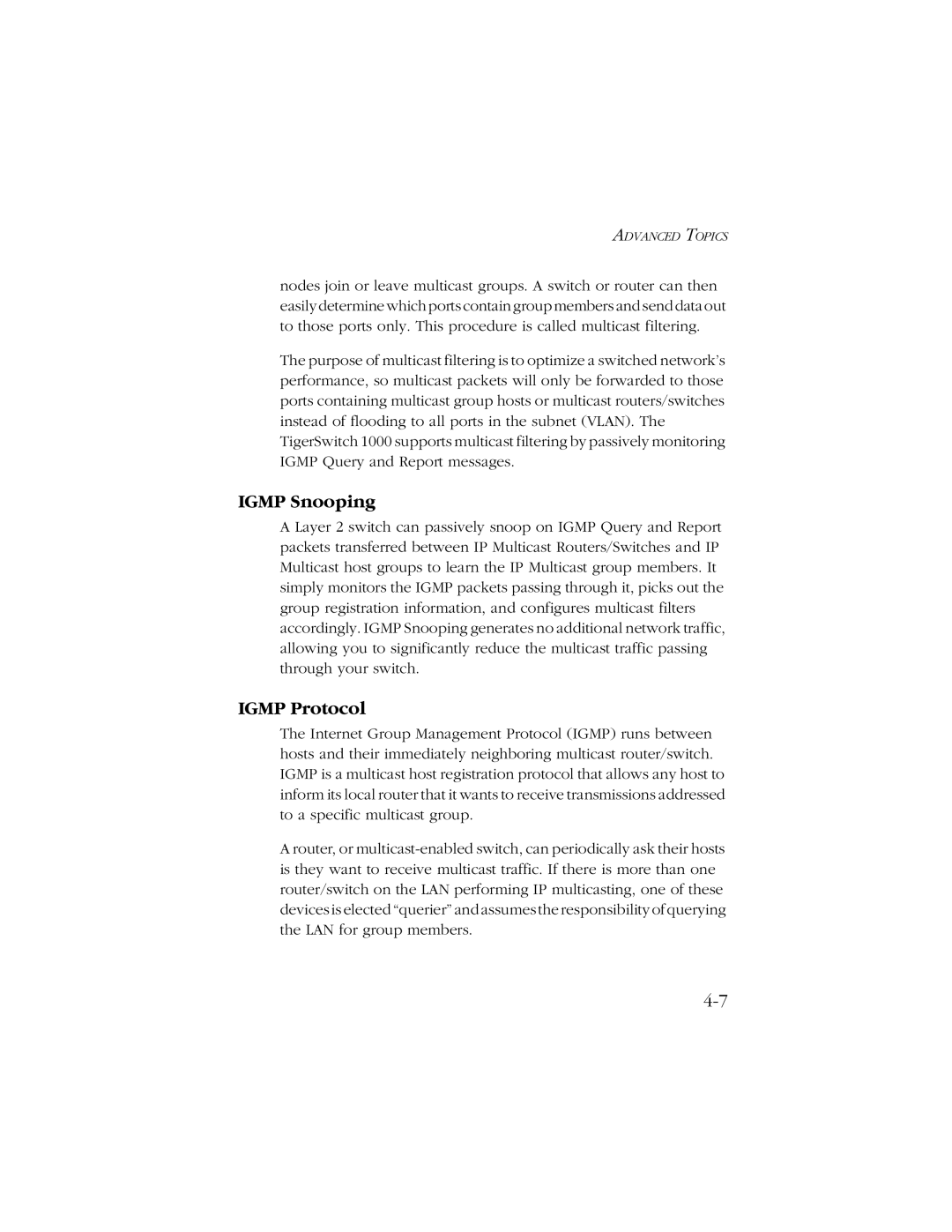ADVANCED TOPICS
nodes join or leave multicast groups. A switch or router can then easily determine which ports contain group members and send data out to those ports only. This procedure is called multicast filtering.
The purpose of multicast filtering is to optimize a switched network’s performance, so multicast packets will only be forwarded to those ports containing multicast group hosts or multicast routers/switches instead of flooding to all ports in the subnet (VLAN). The TigerSwitch 1000 supports multicast filtering by passively monitoring IGMP Query and Report messages.
IGMP Snooping
A Layer 2 switch can passively snoop on IGMP Query and Report packets transferred between IP Multicast Routers/Switches and IP Multicast host groups to learn the IP Multicast group members. It simply monitors the IGMP packets passing through it, picks out the group registration information, and configures multicast filters accordingly. IGMP Snooping generates no additional network traffic, allowing you to significantly reduce the multicast traffic passing through your switch.
IGMP Protocol
The Internet Group Management Protocol (IGMP) runs between hosts and their immediately neighboring multicast router/switch. IGMP is a multicast host registration protocol that allows any host to inform its local router that it wants to receive transmissions addressed to a specific multicast group.
A router, or
